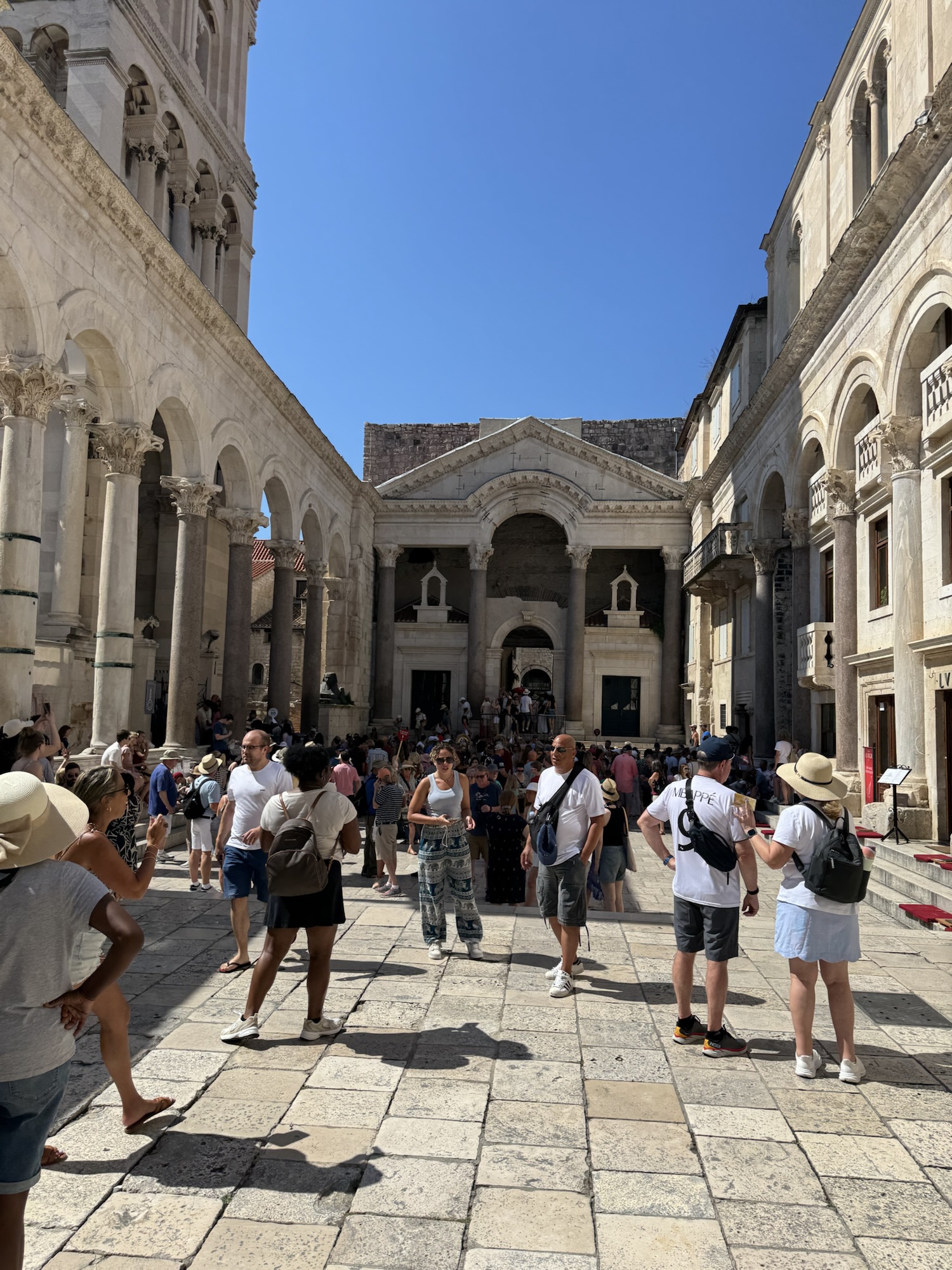I was determined to get our Greek Island Travel Devotional Tour, day 8, back on track in Split, Croatia.
So, the night before I spent 10-15 minutes at dinner with the team going through the historical context of what we would see in Split to try to gin up some excitement about Diocletian’s palace, his mausoleum, Saint Domnius and the cathedral dedicated to him, and, of course, the his relics.
Unlike Santorini and Mykonos, we were able to walk right off the ship onto terra firma. It’s a short walk to Diocletian’s Palace.
Diocletian’s Palace and St. Domnius
Diocletian’s Palace was built between 295 A.D. and 305 A.D. by Roman emperor Diocletian. The palace was built as his retirement home, and included a mausoleum where he would be entombed.
Diocletian interests us because he was the author of the Great Persecution, the worst and most widespread persecution of Roman persecutions against Christians.The Great Persecution consisted of four edicts issed by Diocletian between February 24, 303 A.D. and the Spring/Summer of 304 A.D. The edicts of the Great Persecution called for the destruction of churches and scripture, stripping Christians of rank and rights, and their arrest, torture and death if they didn’t sacrifice to the Roman gods. The Great Persecution lasted ten years, and thousands of Christians were tortured and killed.
Enter Domnius. Domnius was the bishop of Salona, the major Roman city just a few miles inland from Diocletian’s Palace. In 304 A.D. during the Great Persecution, Domnius was beheaded for refusing to sacrifice to the Roman gods.
Diocletion retired to his palace in Split on May 1, 305 A.D. He died in late 311 A.D. or early 312 A.D. and was entombed in his mausoleum.
In October 312 A.D., Constantine received his vision from God and become a Christian. He issued the Edict of Milan in 313 A.D., returning churches and church property to their rightful owners, and allowing Christians to worship freely. In 380 A.D. emperor Theodosius made Christianity the official religion of the Roman Empire.
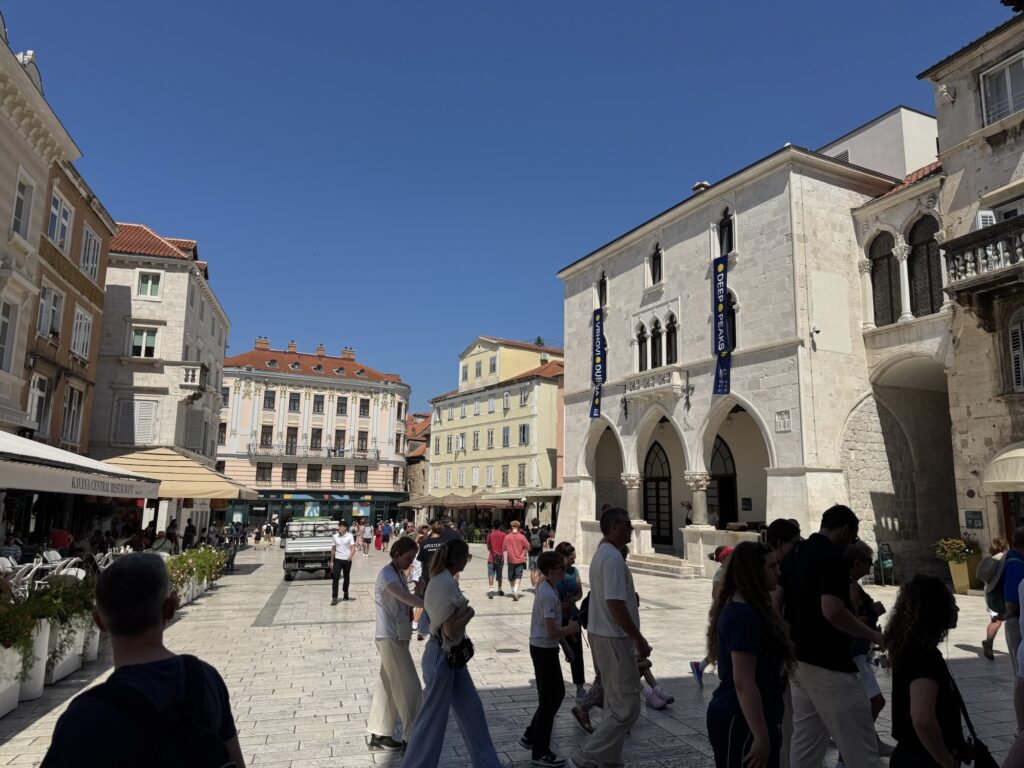
Fast forward 300 years, during which time Christianity continued to spread throughout the Roman Empire. In approximately 615 A.D. the Avars invaded and overan Salona, so the people of Salona retreated within the walls of Diocletian’s Palace, and it becomes their town. They then took Diocletian’s bones from the mausoleum and threw them into the sea and converted Diocletian’s mausoleum into a cathedral they named, St. Domnius Cathedral. They then took Domnius’ bones, which they had brought with them from Salona, and installed them in the cathedral.
So, the building built to be the final resting place of the emperor who initiated the worst persecution against Christians in the history of the Roman Empire became instead the resting place for the bones of one of the early victims of that persecution and a place where the God of that religion is worshipped.
A lesson for us today
The story of Domnius is a wonderful example of how Christianity transformed the Romand empire. In just 300 years, Christians transformed the Roman Empire from pagan to Christian, and it wasn’t done by supporting a political party, pulling the lever in a voting booth, or picking up a weapon.
And they overcame him because of the blood of the Lamb and because of the word of their testimony, and they did not love their life even when faced with death.
Rev. 12:11
It’s a lesson for us today.
How a day on the coast went south
We entered the palace from the Golden Gate and after purchasing tickets, started in the treasury where we saw the bust of St. Domnius, which purportedly contain his bones. Next we went to the Crypt under the Cathedral, but we weren’t sure if this was where Diocletian’s tomb was (it wasn’t).
We walked next into what we thought was left of the cathedral but was just an open dome. It turned out what we thought was that the St. Domnius Cathedral was just an empty 3rd century building. I would figure out later that we had completely missed the actual cathedral. This was a major failure of the GSB Research Division. I’m still not sure how it happened. In retrospect, we should have hired one of the tour guides in the square.
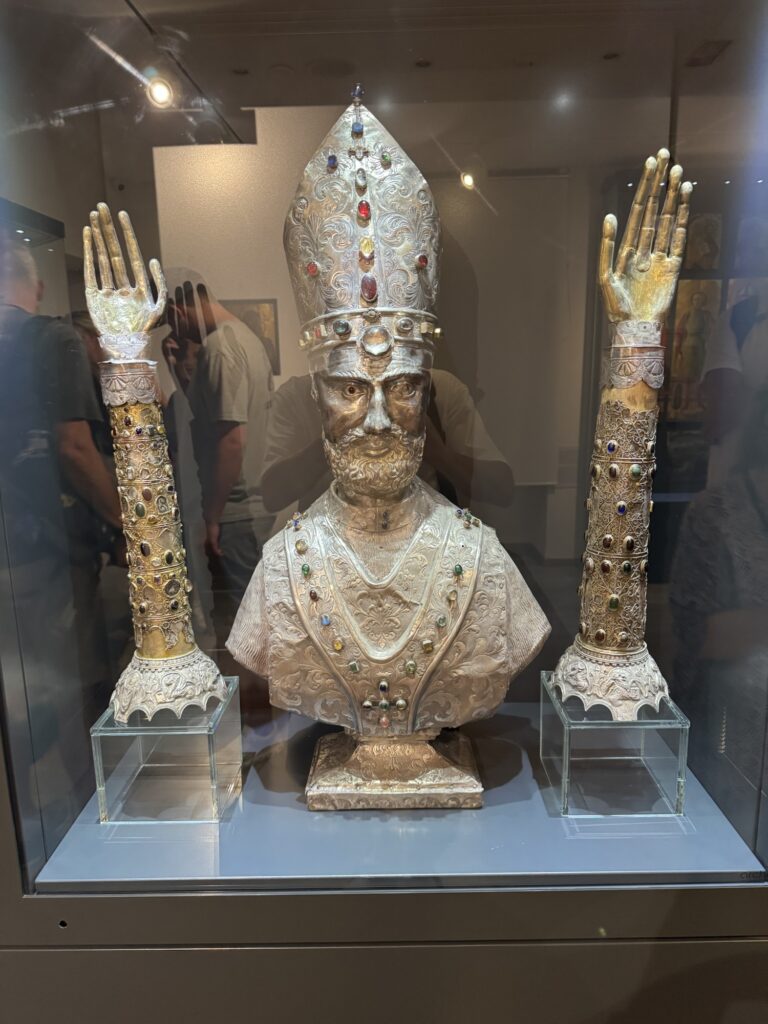
What we did see was, frankly, kind of bland. It had been barely an hour since we left the ship when the rest of the team, save The Wife, said they were going to the beach, and they left. After that, the Wife and I walked to the Temple of Jupiter, explored the town within the palace walls ,and had lunch. After that, she said she was going back to the ship.
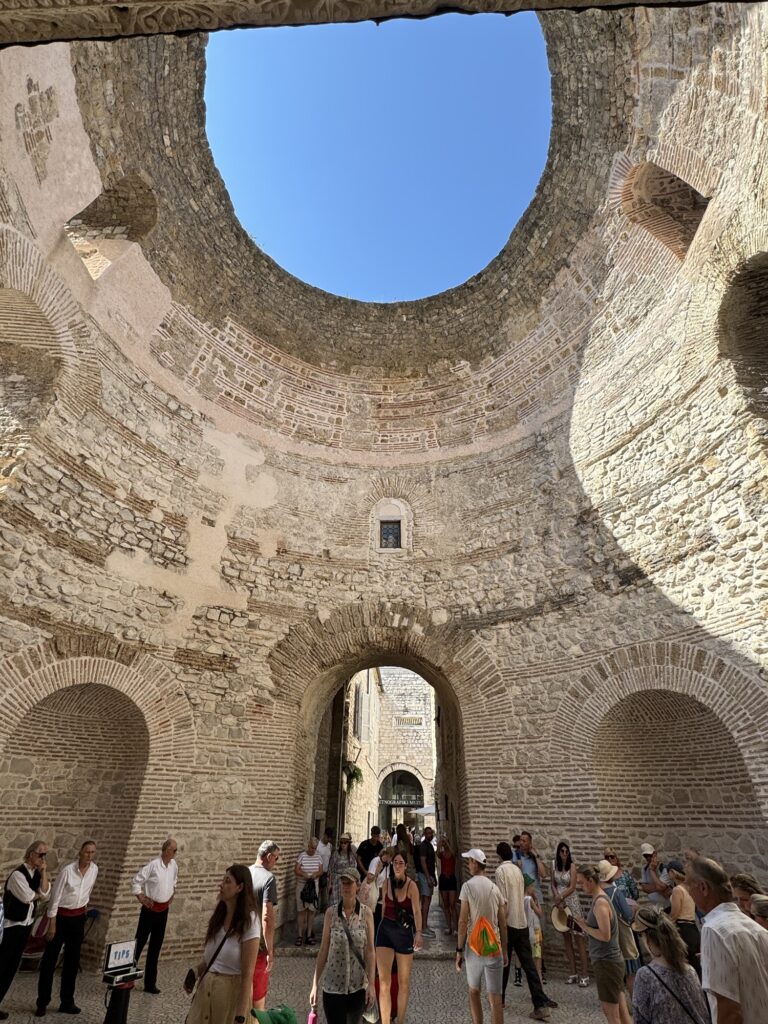
At this point, I felt like the Apostle Paul, who had said, “All abandoned me….” 2 Timothy 4;16-17.
I wanted to go to the Salona Archaeological site a few miles away to see the spot where Domnius had been martyred. However, my phone’s battery was fading fast, and I was having trouble getting an Uber. Even if I could get there, it was not clear I could get back with a phone with no power. Reluctantly, I decided I had to give up on going to Salona.
Salona was out, and that is where i was going to shoot my daily video for social media. This day was adding up to be somewhere between a huge disappointment and a disaster. So, I stopped to gather myself and seek some guidance — not from the chachka-hawking, locals, who seemed to be everywhere — but from the Lord.
What I did with nowhere to go
I decided the best I could do at this point was to go back into the palace to the Peristyle (the square in front of what I thought was St. Domnius Cathedral) and try to shoot my video there. It was a long shot because I had prepared something for the Salona site, not the cathedral, and I didn’t have much battery power. At this point, though, I thought, “What do I have to lose?”
So, I went back in. People were swarming around everywhere in the Peristyle. I tried to shoot over my shoulder so the cathedral would be in the background. However, people would come and stand right behind me, not realizing I was shooting a video over my shoulder. Somehow, I got a good take right before the phone went dark.
Finding the peace of God
At that point, an unexpected sense of peace and joy washed over me. Everything seemed right, as if this was the way it was supposed to be. For whatever reason, I wasn’t to go to Salona. I was supposed to shoot the video here. Maybe it came down a space and time call by the Lord like I wrote about on Day 3. I felt like I had done what the Lord had brought me here to do.
The peace was overwhelming, and coming on the heals of such disappointment, it was surprising. I pride myself as being one who is not ruled by feeling, but it is different with the peace of God, at least it is supposed to be.
Let the peace of Christ rule in your hearts, to which indeed you were called in one body; and be thankful.
Colossians 3:15.
The peace of God is to act as arbiter, a decision-maker, in our hearts. While The Lord’s conviction tells us something is wrong, His peace affirms things are as they should be. I felt the Lord was using His peace to assure me it was okay, that things had worked out as He intended and not to be disappointed.
A gelato with Marcus Marulus
I then decided to enjoy that peace in the palace in the remaining time I had before returning to the ship.
I bought a gelato in a cone–my first of the trip–and ate it as I strolled through parts of the palace I had not yet seen. I then found the statue of Marcus Marulus, a 15th-16th century Croatian Christian writer often referred to as the “Father of Croatian Literature” and the “Christian Virgil.” He was also a lawyer and a judge. How had we missed reading about him?
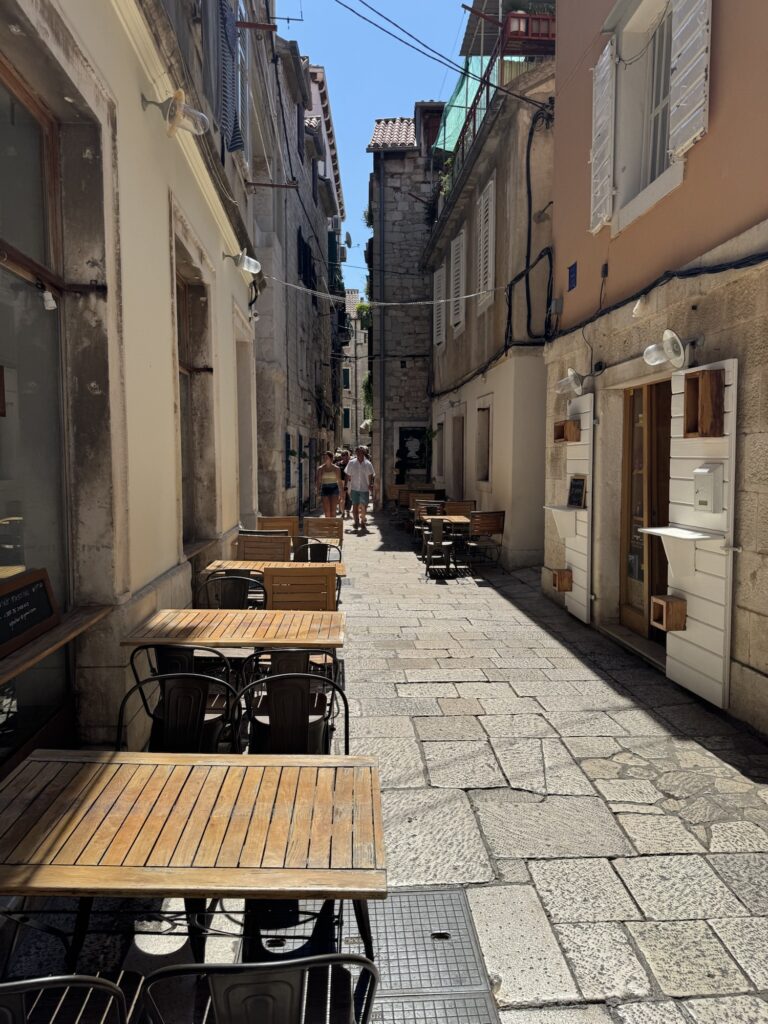
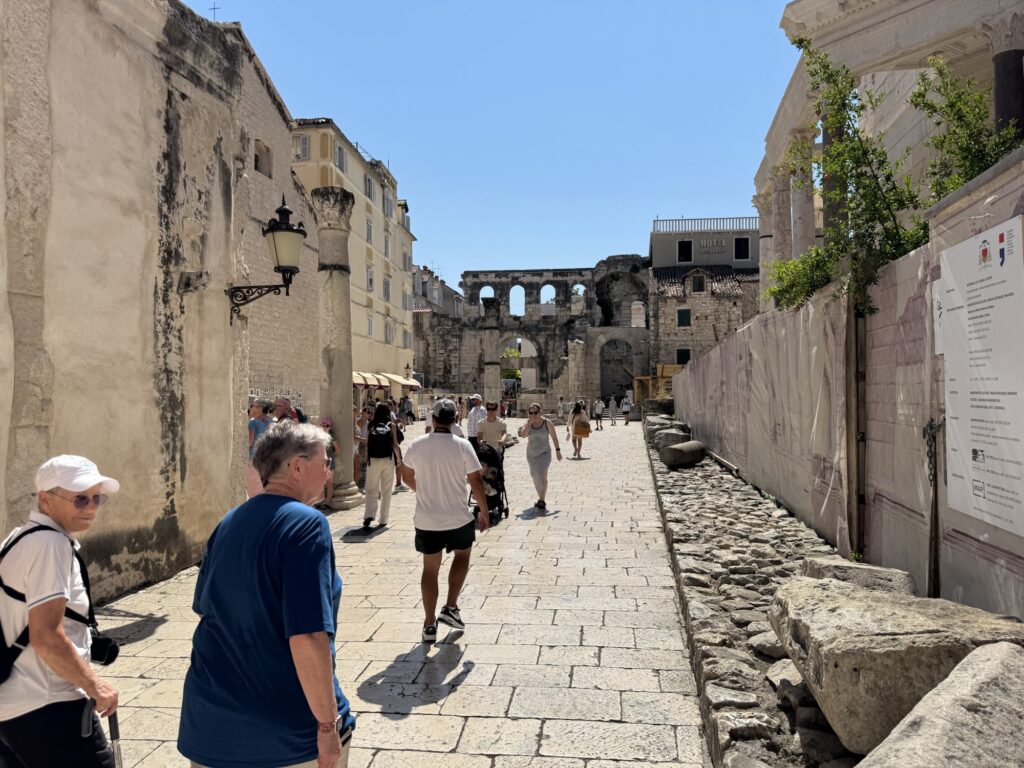
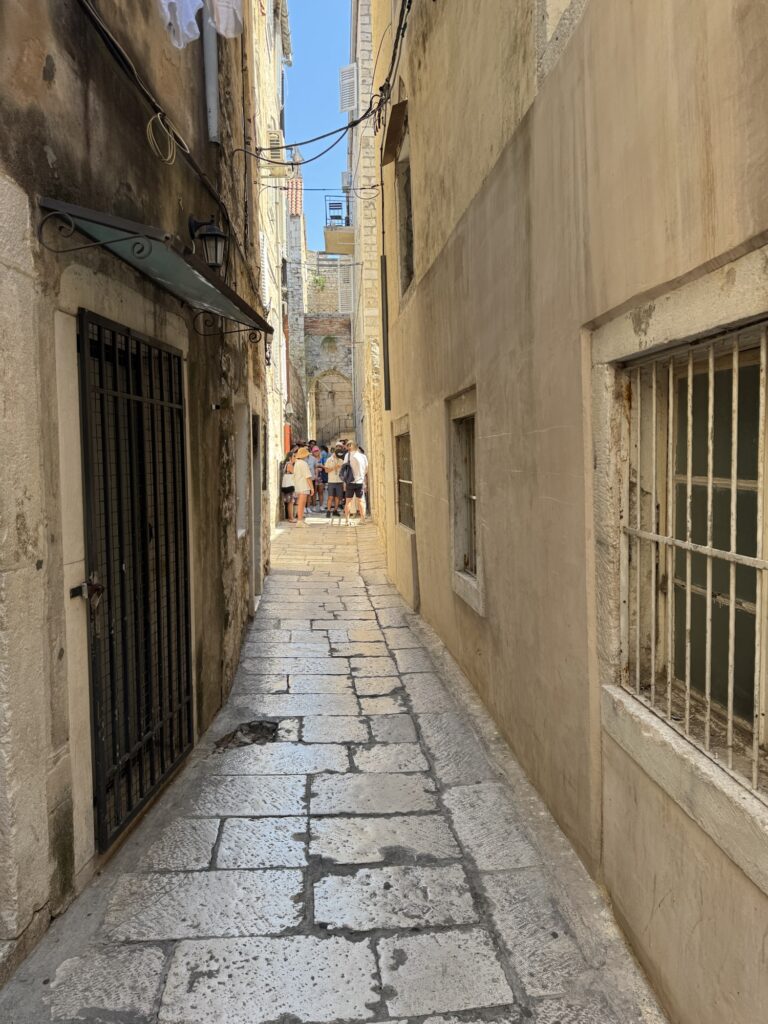
I then enjoyed the leisurely 20-minute walk under a warm Croatian sun along the bay back to the ship.
When I arrived at the room, tired, hot, and sweaty, I was exuberant. The Wife looked at me, and I said “I did it!” It wasn’t a statement of pride that in shooting the video with with little power on my phone. It was that I had done God’s will. I had done His will because the Lord, in His grace, had frustrated my plans to gently direct me back to where he wanted me.
I had a deeper understanding of Jesus’ statement to His disciples after His conversation with the woman at the well, where He said, “My food is to do the will of Him who sent Me and to accomplish His work.” John 4:34.
I had done that, and that was so much better than doing what I had desired. It always is.
More tomorrow. GS

